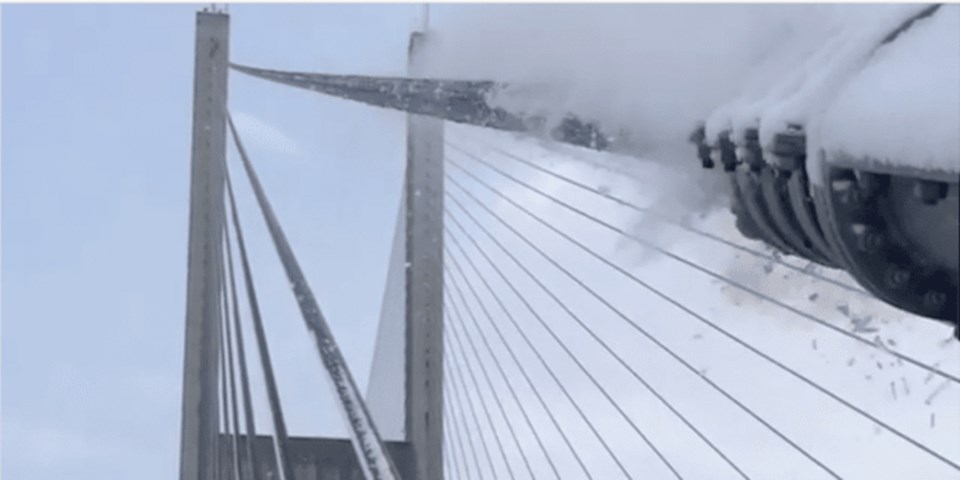Despite its cable collar system, some snow and ice may still end up falling from the heights of the Alex Fraser Bridge.
That’s according to the Ministry of Transportation and Infrastructure, which says a changing climate has resulted in more frequent instances of falling ice and snow from bridge cables.
The ministry and its maintenance contractors are closely monitoring conditions when the temperature is near freezing and snow is in the forecast.
On Lower Mainland highways, maintenance contractors will proactively apply anti-icing brine when low temperatures are forecast, while plows are mobilized to quickly deal with any accumulation of snow, the ministry says.
Once a rare occurrence, over the past few years falling ice and snow from the Alex Fraser Bridge has become a regular occurrence, the ministry notes.
A system of cable collars has been in place to help prevent the build-up of snow and ice on both the Port Mann and Alex Fraser bridges, with the system adopted for the Alex Fraser in winter of 2017/18.
In the years that cable collars have been used, they have been successful in removing most of the snow on the cables.
However, some snow may be shed naturally from the cables as the weather warms or if it is blown off, the ministry adds.
The ministry also notes that to better prepare for the weather conditions that lead to falling ice and snow, it has taken steps to improve its weather forecasting and will be activating the cable-collar systems sooner in a weather event.
As temperatures fall, drivers are also reminded that weather conditions can change very quickly and in the Lower Mainland, a cold, rainy day can turn to snow.



